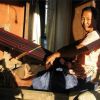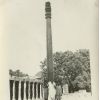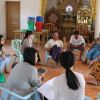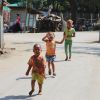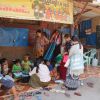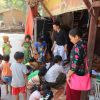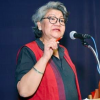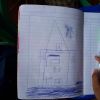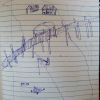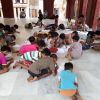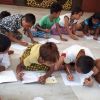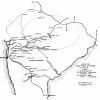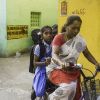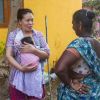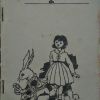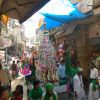The search found 108 results in 0.033 seconds.
Search results
I want to maintain this bridge as our daily wage depends on this,” told to me (Khin Khin Nyein) by one of the women vendors. We observed that she was chewing the beetle leaves and we asked, “where do you spit the beetle juice?” She replied immediately, “[o]n the ground” with a shy laugh. I think the reason why she laughed was because she recognised that she herself did something which made the bridge dirty.
I am Wekoweu Tsuhah (Akole) and I belong to the Chakhesang tribe of Nagaland. I am a women’s rights activist and a development practitioner, an advocate for gender equality, social and environmental justice. While growing up, I experienced fear and rage as I lived through armed conflict, alcoholism, domestic violence, poverty and these shaped the person I am today. I am passionate about working with people, women in particular; but it is only after I started working with a women’s rights organization – NEN, the North-East Network, did I truly realize and recognize these social injustices.
Sano Vamuzo is the founding President of the Naga Mothers’ Association (NMA), an important civil society organization formed by women in Kohima in 1984. The follwing is excerpted from an interview with Dr Rakhee Kalita Moral.
It was believed that if one made a wish with their arms wrapped around the Iron pillar with their back against it their wish would be granted. Before the iron railings that ‘protect’ the Iron Pillar today, many visitors, both young and old, would try their luck at making a wish. Similar are the memories of long-time residents of Mehrauli. Many remember being able to freely enter the Qutub Minar complex and playing or picnicking, before the ticket booths and high walls of today.
Madhya Pradesh is India’s leading tendu leaf producing state. Used primarily to make Beedi , this valuable forest produce has a history of control and ownership over the years. Piyush Kothari (63), a local tendu merchant based in Pipariya, talks about the changes in the trade and how the town’s proximity to nearby forest tracts made it suitable for the early traders. Excerpts from our recorded conversation (December 2017):
We spoke with the village leaders about putting trash systematically and we gave them some dustbins to implement segregation. We discussed with them to know their knowledge of putting trash systematically.
Those kids were coming to us in the village where we were sharing knowledge. They were so happy to learn with us. They were playing around when we first went there.
When I looked at those kids, I felt that they had very little of health education because they were dirty and didn’t even were footwear or slippers. But when they were running to me,I felt how they loved to learn with us. And I felt that I m a useful person and that I was so impressive to them as an educated person. In other words, I learnt to be a little proud of myself.
When I see their slippers, I feel that they are unsystematic. This is where we begin sharing knowledge with them.
ဒီကလေးလ က ဒီေုမိ ျိုး စည်းကမ်းမရှိဖြစ်လေ ာကို ဖြုဖြင်လြးချင်စိ ်လ ဖြစ်မိ ယ်။ ဥြမာ ဒီေုမိ ျိုး စည်းကမ်းမရှိ ဲ့ အဖြစ်မျိုးကို ဖခားနိုင်ငံဖခားသား စ်လယာက်လယာက်ကသာ ဖမင်သ ားရင် ဖမေ်မာေူမျိုးက ဒီေုမိ ျိုးေား ဆို ာမျိုး
မဖမင်လစချင်ဘူး။ အဲေုိ အဖမင်ခံရ ာေည်း များခဲ့ပြ။ီ ထြ်ပြီးလ ာ့ မဖြစ်လစချင် လ ာ့ဘူး။ဒါကကီးကိုဖြင်ြစ်ချင် ဲ့စိ ်လ ဖြစ်ော ယ်။
I just ask them “does it look good when you see your slippers messy?”
They said “No”.
Then, I ask them “how will you solve this problem?”
They said that they will place their slippers systematically.
I understand that they can be changed easily if they have good guidelines. I feel that I can change some parts of their life.
When I see this, I feel that they are not that unaware children. We can encourage them, we can teach them and we can cultivate them. But it is funny that every time when I go there I have to remind them to place their slippers systematically.
But I hope one day this will be become tnatural. Now, most of them have got to the point where they place their slippers systematically. So, I feel that I can do it. I can improve some parts of their life.
In the class, I asked my students that “how does the increasing degree of urbanization change the next generation’s view on localized cultural identity? And how should we as anthropologists collaborate with the community?”
In the class, I discussed on the concept of urban life and then I asked the students to think about the ways in which they all could engage with Taungthaman Village to understand the impact of urban life.
This is what Monalisa Chankija had to say when we asked her how she views women's freedom in Naga society:
Taungthman village through the minds of young children
Pipariya, as pointed by a number of early settlers of the town, shares its’ initial history with a section of railway line that was laid out during the colonial rule to connect the cities of Bombay (present-day Mumbai) and Calcutta (present-day Kolkata).
Simi Mariya Thomas, Research Scholar, MIDS, selected a photograph from the exhibition, Ambedkar Nagar- Near Kakkan Bridge, Chennai, to write her story for the session on Reading/Writing/Re-writing/Telling/Re-telling using prompts, 20 December 2019.
Superwomen of Chennai always surprise and excite me. They design their life in a manner in which they are fully involved into some sort of activities around the clock.
The two women are as different as chalk and cheese. And I don't mean in terms of skin colour alone. Their appearance distinctly identifies them from two different regions of India - Northeast and South. They speak different languages and cook and eat food vastly different. But they are one - as women, as mothers as sisters in arms. They are united in their strength in the face of adversity. Migration, resettlement and subsistence bring them together in this space. Each is invisible, marginalised and discriminated against - be it colour, caste or communal identity.
Mesha Murali, Senior Research Assistant, Centre for Community Knowledge, Ambedkar University Delhi, for her story took inspiration from all the exhibited photos for the session on Reading/Writing/Re-writing/Telling/Re-telling using prompts, 20 December 2019.
I saw people sitting on the street, outside their houses, talking, eating and enjoying the passing day. Children were playing games, laughing, dancing to music and being asked by their parents to stay at a safe distance from the main street.
Kumar Unnayan, Centre for Community Knowledge, Ambedkar University Delhi wrote Jaadoonagri (Wonderland) for the session on Day 2:Reading/Writing/Re-writing/Telling/Re-telling using objects/prompts, 20 December 2019.
Photographs have proven to be interesting tools to get people to open up about themselves and share memories of their past. For instance, the photo of Anwar posing at Phasi Ghar (execution point) not only got him talking about the monument that no longer stands, but also reminded him of his childhood spent dressing up and posing for photographs at various locations in Mehrauli, Delhi.
Mesha Murali: Bus stand se aage. Kahan?
A procession of Tazias and street performers greet you while walking through the main market road, in Mehrauli, on the day of Muharram. The procession is organized by Auliya Masjid and Bakhtiyar Kaki Dargah situated in the neighbourhood.
Pages



